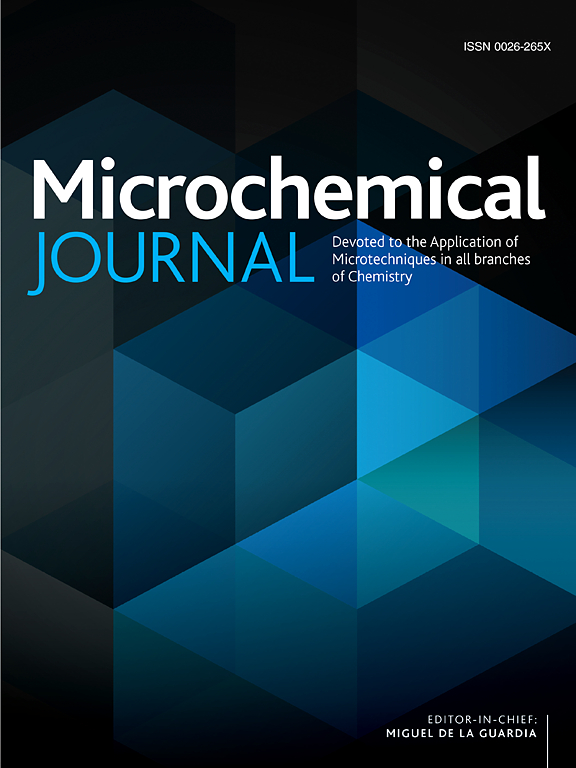Investigation of Ruthenium–based pyridine substituted 1,2,4–Triazole–5– ylidenes complexes as molecular electrocatalysts in the effective detection of date rape drugs
IF 4.9
2区 化学
Q1 CHEMISTRY, ANALYTICAL
引用次数: 0
Abstract
Numerous new psychoactive substances have been introduced into the drug market over the past decade mainly with an intention to implement their use for clinical purposes. However, the necessity of updated screening approaches for their quantification within the clinically required concentrations is crucial to avoid drug abusive incidents. Present work describes a study on the application of suitably designed N–heterocyclic carbene (NHC) coordinated ruthenium(II) p–cymene complexes for the detection of date rape drugs (DRDs) such as ketamine and scopolamine. The study highlights the synthesis of two structurally–tuned ruthenium(II) NHC complexes bearing pyridine and benzyl/benzonitrile substituted 1,2,4–triazol–5–ylidene ligand and their spectral and analytical characterization. Further, the preparation of the working electrodes using ruthenium(II) NHC complexes for electrochemical measurements evidenced the ultra–trace level detection of predatory drugs like ketamine and scopolamine, with limit of detection as low as 0.275 and 4.379 nM, respectively. Developed ruthenium NHC complexes are cost–effective, easy–to–use and successfully employed for the detection of DRDs at pertinent concentrations using an aqueous electrolyte. Furthermore, the title ruthenium derivatives are stable, hence upon real time analyses, could be employed in the assembly of point–of–care devices. Alongside, these electrochemical sensors can potentially simplify the conventional protocols that are time–consuming and demand tedious sample preparation methods; therefore, the usage of these organometallics by forensic scientists in the investigation of drug abuse cases opens up new avenues.

求助全文
约1分钟内获得全文
求助全文
来源期刊

Microchemical Journal
化学-分析化学
CiteScore
8.70
自引率
8.30%
发文量
1131
审稿时长
1.9 months
期刊介绍:
The Microchemical Journal is a peer reviewed journal devoted to all aspects and phases of analytical chemistry and chemical analysis. The Microchemical Journal publishes articles which are at the forefront of modern analytical chemistry and cover innovations in the techniques to the finest possible limits. This includes fundamental aspects, instrumentation, new developments, innovative and novel methods and applications including environmental and clinical field.
Traditional classical analytical methods such as spectrophotometry and titrimetry as well as established instrumentation methods such as flame and graphite furnace atomic absorption spectrometry, gas chromatography, and modified glassy or carbon electrode electrochemical methods will be considered, provided they show significant improvements and novelty compared to the established methods.
 求助内容:
求助内容: 应助结果提醒方式:
应助结果提醒方式:


